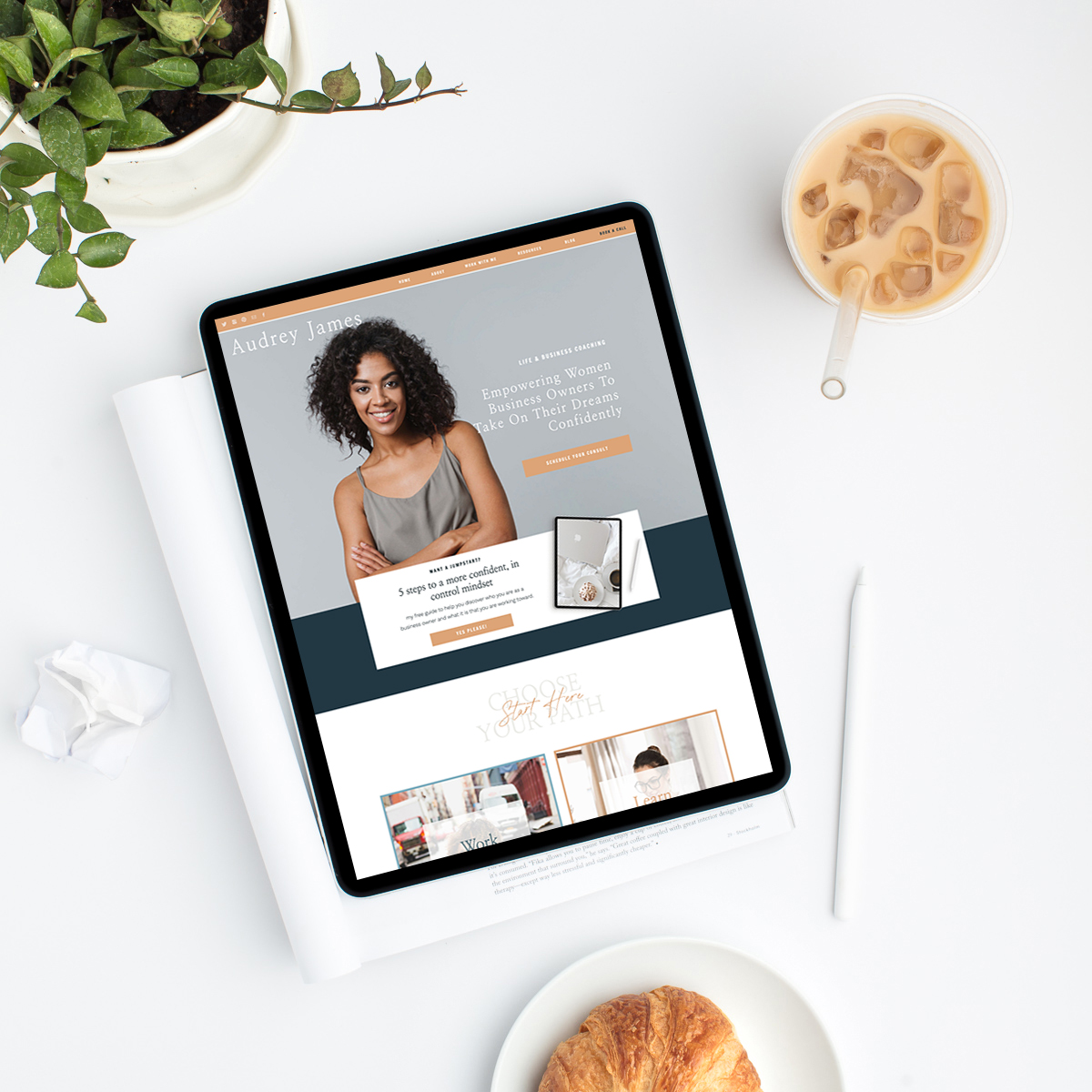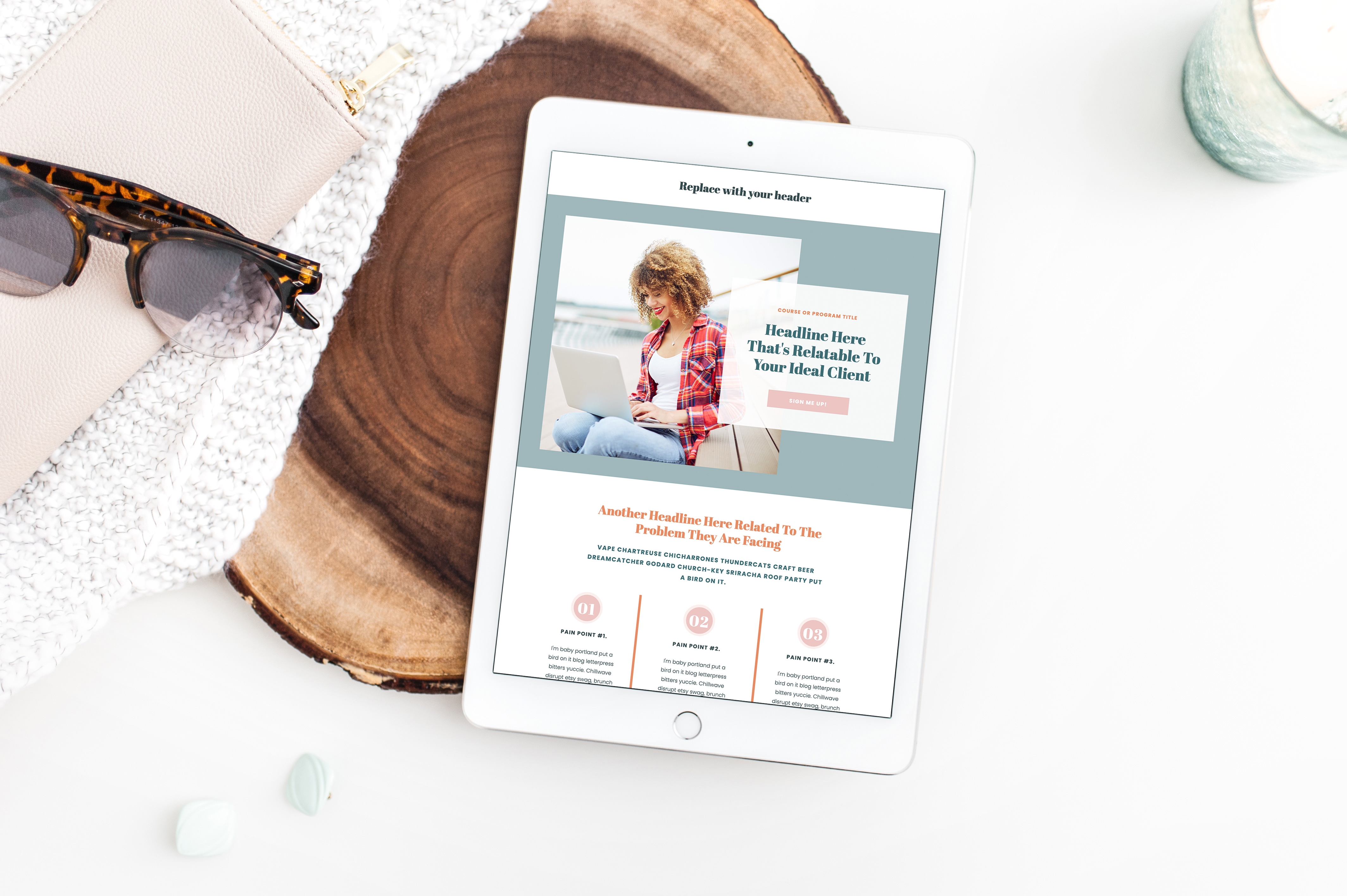Your sales page is designed to be high converting and sell your product – much like your website. So how do you know where to start?
With so many marketing terms and lingo going around online, sometimes it’s hard to figure out exactly what your business needs. Sales funnel, website, portfolio, social media… How do you know which one to focus on?
Whether you need a website or a sales page depends on what you’re going to do with it
The answer to this depends on what stage your business is in. Are you starting your business or working on increasing your audience? Maybe you’re looking for a one-stop-shop to showcase your experience. Or you’re launching a new offer and want to promote it with the right setup.
Your website is about your whole business
On a basic level, your website is your storefront on the web. It’s the place people go when they’re looking to learn about you and your business. Ideally, you offer an incentive for users to sign up and stay connected (usually called a lead magnet).
There’s also a space in your website to provide value to your visitors: Your blog. Important for SEO and to enhance user experience, your blog is the place to share your expertise for free and build a relationship with your readers.
Your website also includes your products or services and a way for potential clients to contact you.
Most websites for coaches and similar professionals include a homepage, a product or service page, a contact page, and an about page. For photographers, designers, and other creatives, portfolio websites (meaning they include a gallery of past projects) are the norm.
As you see, your website includes a lot of information about you and your business. It gives your reader everything they need to engage with you.
Most business owners start their business with a website. And it often evolves as the business and brand change. But your website’s bones will most likely remain the same over time.

Your sales page is about a specific product or service
On the flip side, a sales page is basically a brochure of one specific product or service that you offer.
Your sales page includes all the relevant information about your offer, including benefits, features, client reviews, and everything your reader needs to know to buy this product or sign up for this course.
Sales pages are standalone pages that you can share when promoting a new launch, including courses, a new program, or a new package deal, for example.
Are landing pages the same as a sales page?
While a sales page could be considered a landing page, they’re not exactly the same:
A landing page is technically any standalone page that directs your reader to do something. But this action doesn’t have to be “Buy now.” A signup page with a freebie, an event page, and even announcement pages are all landing pages.
However, your sales page is designed to sell the specific offer you’re promoting. Which is why it’s so important to be very strategic about your sales page.

Do you need a website or a sales page?
Depending on where you are with your business, you can probably use both. But not for the same purpose.
When choosing between a website or a sales page, keep in mind:
- Your website is your online storefront. A beautiful, well-thought-out website is key in getting visitors to learn about you and interact with your business. You can make a website from day 1 to entice potential clients and showcase your best work or packages easily.
- Your sales page is your salesperson. Look at it this way: If your website is your store, you’re welcoming visitors and letting them walk around and get familiar with your business. Once they’re ready to go, your sales page is in charge of showing them the product they need to solve their problems.
Your website and sales pages can coexist. But they’re not the same
A strategic online presence for creative businesses is key in reaching your audience and improving your chances of getting new business.
For most businesses, a winning marketing strategy includes a website, social media, sales and landing pages, a sales funnel, and much more. it’s not either/or. They’re all moving parts that work in tandem to convert readers into buyers so you don’t miss another sale.